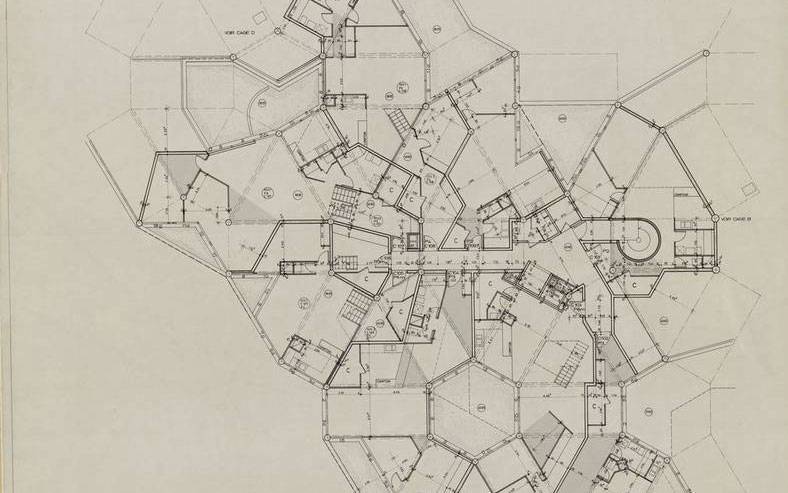 Research
Research

Subject
Everyday architectural logics: Female Brutalist architects and the project of logical architecture, 1953 – 1986.
First and second supervisors
Abstract
Paola’s PhD proposal investigates a less-well researched aspect of Brutalism, by focusing on two key women architects working in post-war Europe, Alison Smithson and Renée Gailhoustet, and their seemingly silent but shared idea of creating an ‘everyday’ form of ‘logical’ architectural knowledge. The project is a revisionist synthesis of architectural history and theory, which has a focus on logic, derived from process and analytic forms of logic in 20th century philosophy.
Paola’s work argues that Smithson and Gailhoustet’s individual design logics have been sublimated to husband-wife status in post-war European architectural history studies. Instead, by examining their theoretical and material work, including their contact between 1961-1962, Paola shows how that their contribution to Brutalism is composed of unusual modes of logical reasoning around the everyday: Smithson thought that architecture should evolve as an equivalent of the complexity of our way of thinking, which rationally signifies our way of making sense of the construction of the world (Smithson 1970). Similarly, Gailhoustet conceived the idea of ‘operative structure’, operating from her objective grammar platform and design processes, to social actualities (Gailhoustet 1975). In its instrumental thinking, the everyday became a pedagogical project, highlighting both architects’ analytic innovations as social and materially valuable to the design of housing and educational projects.
Specifically, they share ‘everyday’ logical principles with two overlooked female analytic philosophers, Susan Stebbing and Susanne Langer. These rational philosophers believed in the pedagogical potentiality of logic: logic is a discipline that is divorced from the real world, but at the same time could, through the very instrumentality of rational reasoning, question different ways of combining abstract propositions together and solve the problems encountered on a daily basis. Inspired by Whitehead’s philosophy, these philosophers argued for a situated project by working through and with logic towards new definitions of sociality.
Paola will extend the premise of logic, which is normally assigned to a cybernetic interpretation of architecture, to a purely logical constructional system in adherence to the actuality of the everyday. Ultimately, Paola’s study enriches histories of women’s participation in logical and materialist architectures, showing new connections between women, architecture and logic.
Biography
Paola Camasso is currently a PhD candidate in Architectural & Urban History & Theory at The Bartlett School of Architecture.
She obtained her Architectural History MA at The Bartlett in 2017, with a dissertation proposing a historical and philosophical analysis of Italian post-war social housing project, the Vele of Scampia. Previously, she graduated in Fashion Design at Seconda Università degli Studi di Napoli in 2015.
Publications
- Camasso, Paola. (2020 forthcoming) ‘Terremoto in Palazzo: a disruptive analysis of the Vele of Scampia.’ in Beattie, Martin., Kakalis, Christos & and Ozga-Lawn, Matthew. (eds.) Mountains and Megastructures - Neo-Geologic Landscapes of Human Endeavour. London: Palgrave Macmillan.
- Camasso, Paola. (2017) ‘Terremoto in Palazzo: Contextualising forces in the architecture of the Vele of Scampia’ in MA Architectural History Symposium (eds.) Building Ruptures. London: The Bartlett School of Architecture, UCL, pp. 16-20.
Image: Renée Gailhoustet, Le Liégat, structure H, 1977. © Collection Frac Centre-Val de Loire
 Close
Close

